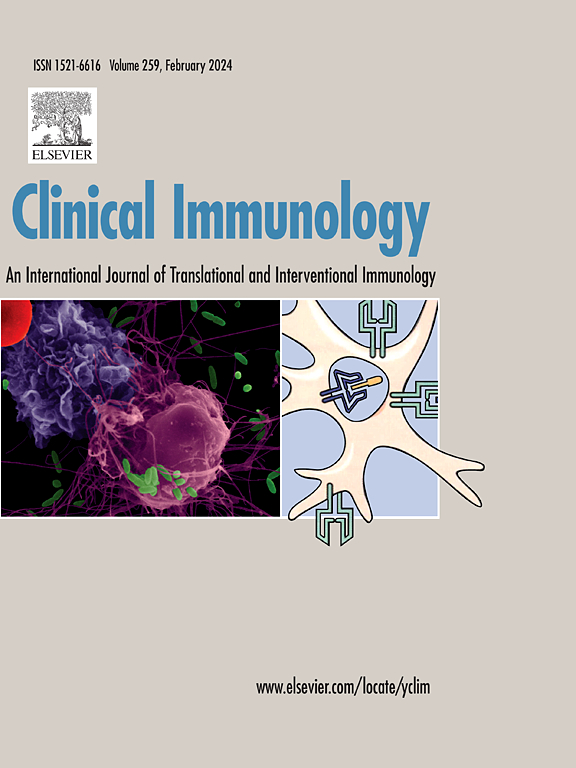吸入结晶二氧化硅对hocl诱导的系统性硬化症小鼠模型的肺和全身影响:伊拉斯谟综合征的实验模型。
IF 4.5
3区 医学
Q2 IMMUNOLOGY
引用次数: 0
摘要
职业性暴露于结晶二氧化硅与系统性硬化症(也称为伊拉斯谟综合征)发病率增加有关。二氧化硅相关的SSc的潜在机制仍然知之甚少。我们证明,在次氯酸(HOCl)诱导的SSc小鼠模型中,早期和反复的二氧化硅暴露有助于SSc症状的严重程度。对暴露于二氧化硅的HOCl小鼠肺样本的分析显示,纤维化和炎症轻微加重,特别是NLRP3炎症小体基因的额外过度表达和经典单核细胞、巨噬细胞、树突状细胞和中性粒细胞的募集。二氧化硅暴露在SSc小鼠模型中显示出全身效应,循环经典单核细胞计数升高,皮肤中炎症基因过度表达。二氧化硅暴露的SSc患者也比未暴露的患者有更严重的皮肤病。总的来说,我们提供了免疫细胞群和相关途径在早期致病机制中促进hocl诱导和二氧化硅相关的SSc的新见解。本文章由计算机程序翻译,如有差异,请以英文原文为准。
Pulmonary and systemic effects of inhaled crystalline silica in the HOCl-induced mouse model of systemic sclerosis: An experimental model of Erasmus syndrome.
Occupational exposure to crystalline silica is etiologically linked to an increased incidence of systemic sclerosis (SSc), also called Erasmus syndrome. The underlying mechanisms of silica-related SSc are still poorly understood. We demonstrated that early and repeated silica exposure contribute to the severity of SSc symptoms in the hypochloric acid (HOCl)-induced SSc mouse model. Analyses of lung samples from silica-exposed HOCl mice revealed a slightly aggravation of fibrosis and an exacerbation of inflammation, notably an additionally overexpression of NLRP3 inflammasome genes and a recruitment of classical monocytes, macrophages, dendritic cells and neutrophils. Silica exposure showed systemic effects in SSc mouse model with an elevated circulating classical monocyte counts and an overexpression of inflammatory genes in the skin. Silica-exposed SSc patients also had more severe skin disease than unexposed patients. Overall, we provide new insights on immune cell populations and related pathways in early pathogenic mechanisms contributing to HOCl-induced and silica-related SSc.
求助全文
通过发布文献求助,成功后即可免费获取论文全文。
去求助
来源期刊

Clinical immunology
医学-免疫学
CiteScore
12.30
自引率
1.20%
发文量
212
审稿时长
34 days
期刊介绍:
Clinical Immunology publishes original research delving into the molecular and cellular foundations of immunological diseases. Additionally, the journal includes reviews covering timely subjects in basic immunology, along with case reports and letters to the editor.
 求助内容:
求助内容: 应助结果提醒方式:
应助结果提醒方式:


